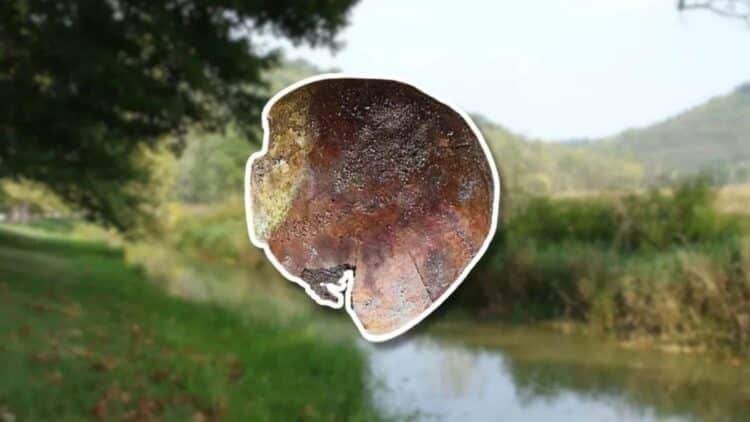World
Ancient Human Remains Discovered in Indiana River Challenge History

A remarkable discovery in Indiana has unveiled human remains dating back over 4,000 years, a find that could reshape understandings of ancient populations in North America. An amateur archaeologist stumbled upon a human skull fragment while walking along the banks of the Whitewater River in early summer. This unexpected find has drawn the attention of forensic anthropologists, who have confirmed that the remains date to approximately 2300 B.C., during a time when ancient civilizations in Egypt and Mesopotamia flourished.
The significance of this find extends beyond the individual remains. Experts have determined that the skull fragment is from the Late Archaic period, a time characterized by the transition of hunter-gatherer groups to more settled lifestyles. While the precise sex of the individual remains undetermined, it is established that the remains belong to an adult. Current analyses have not definitively linked the remains to any modern indigenous tribe, though it is believed they may relate to the ancestral peoples of the present-day Shawnee, Miami, Potawatomi, or Delaware nations.
Uncovering Indiana’s Hidden Archaeology
The discovery was catalyzed by recent rainfall and erosion along the riverbank, which exposed the fossilized skull fragment. Recognizing the potential importance of the find, the amateur archaeologist alerted local authorities. The remains were subsequently sent to specialized research centers for isotopic analysis, which confirmed their age and historical context.
This finding is particularly significant because the majority of the oldest human remains in North America have been discovered in the western regions or near the Arctic. Indiana, typically overlooked in discussions of ancient prehistory, now emerges as a site of notable archaeological importance. This suggests that human populations may have established themselves in the eastern part of what is now the United States much earlier than previously understood.
The Late Archaic Period and Its Implications
The Late Archaic period marks a critical phase in the evolution of early human societies in North America. During this time, groups began to settle in permanent locations, leading to the development of more complex social structures and technological advancements, including the use of bone tools and early agricultural practices.
Despite the valuable information such remains can provide, they will not be displayed publicly. Instead, the remains will be returned to the appropriate communities, honoring cultural connections to the past and adhering to current legislation regarding the treatment of indigenous remains.
As researchers analyze these ancient remains, they hope to gain deeper insights into the lives of the individuals who lived in North America thousands of years ago. This discovery not only enriches the historical narrative of the region but also emphasizes the need for further archaeological exploration in areas previously deemed less significant in the study of early human history.
-

 Lifestyle4 months ago
Lifestyle4 months agoLibraries Challenge Rising E-Book Costs Amid Growing Demand
-

 Sports3 months ago
Sports3 months agoTyreek Hill Responds to Tua Tagovailoa’s Comments on Team Dynamics
-

 Sports3 months ago
Sports3 months agoLiverpool Secures Agreement to Sign Young Striker Will Wright
-

 Lifestyle3 months ago
Lifestyle3 months agoSave Your Split Tomatoes: Expert Tips for Gardeners
-

 Lifestyle3 months ago
Lifestyle3 months agoPrincess Beatrice’s Daughter Athena Joins Siblings at London Parade
-

 World3 months ago
World3 months agoWinter Storms Lash New South Wales with Snow, Flood Risks
-

 Science4 months ago
Science4 months agoTrump Administration Moves to Repeal Key Climate Regulation
-

 Science3 months ago
Science3 months agoSan Francisco Hosts Unique Contest to Identify “Performative Males”
-

 Business4 months ago
Business4 months agoSoFi Technologies Shares Slip 2% Following Insider Stock Sale
-

 Science4 months ago
Science4 months agoNew Tool Reveals Link Between Horse Coat Condition and Parasites
-

 Sports4 months ago
Sports4 months agoElon Musk Sculpture Travels From Utah to Yosemite National Park
-

 Science4 months ago
Science4 months agoNew Study Confirms Humans Transported Stonehenge Bluestones









